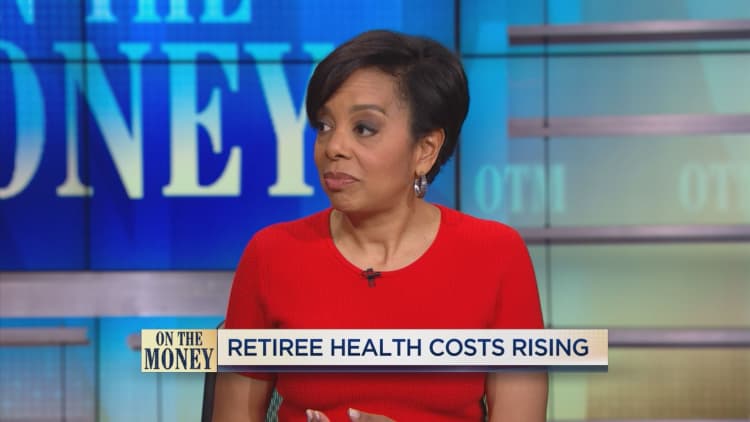Medicare is often referred to as a maze. The various deadlines for signing up may have something to do with that.
While turning 65 makes you eligible for Medicare, not everyone will follow the same path to enrollment. Some beneficiaries are automatically signed up, while others may partially enroll or take no action until long after their eligibility age.
Regardless of which category you fall into, negative consequences could result from missing the deadlines that apply to your situation, including financial penalties and/or a period of having no coverage.
Roughly 62.4 million people are enrolled in Medicare, the majority of whom are age 65 or older. Basic Medicare consists of Part A (hospital coverage) and Part B (outpatient care and medical equipment). Most people qualify for premium-free Part A because they have a long-enough work history of paying into Medicare through payroll taxes. Part B comes with a standard monthly premium, which is $144.60 for 2020.
More from Personal Finance:
Medicare changes may be in next coronavirus relief package
Treasury canceling stimulus checks to dead recipients
'Jumbo' loans may be harder to get. Here's what to expect
Part D plans (prescription drug coverage) also have premiums, which can vary by plan. Higher earners pay more for Parts B and D, while low earners may qualify for Medicaid coverage and get extra help for prescriptions. There are also Medicare Advantage Plans (Part C) as well as Medicare supplement plans, aka "Medigap" (more on these options farther down).
If you're currently planning to sign up, you probably shouldn't wait until the last minute.
"With everyone working from home because of Covid-19, applications for Parts A and B are taking a little longer to process," said Elizabeth Gavino, founder of Lewin & Gavino in New York and an independent broker and general agent for Medicare plans.
Now for those deadlines. (It's best if you sit down while reading; it gets complicated fast.)
Parts A and B if you're 65
If you already are receiving Social Security before age 65, you'll be automatically enrolled in Part A.
The same applies to Part B in the above situation. While you can opt out, be sure you have acceptable coverage in its place — as defined by the government — if you plan to enroll down the road.
"If you don't want Part B, you need to notify Social Security to disenroll you," said Danielle Roberts, co-founder of insurance firm Boomer Benefits.
Be aware that if you don't enroll in Part B when you were supposed to and have no other qualifying coverage, you could face late-enrollment penalties.

That amount is 10% of the standard premium for each 12-month period you should have been enrolled. (There is no penalty associated with delaying Part A).
Individuals who aren't auto-enrolled in Parts A and B at age 65 get a seven-month window to sign up unless they choose to delay it due to qualifying coverage elsewhere. That initial enrollment period starts three months prior to the month of your 65th birthday and ends three months after it.
Be aware, though, that if you wait until the month you turn 65 or during the three months after that to enroll, your Part B coverage will be delayed, which could cause a gap in coverage.
Related deadlines
Regardless of whether you are auto-enrolled or sign up on your own at age 65, there are other deadlines to know.
If you want to pair Parts A and B with a standalone Part D prescription drug plan, you should do this during your seven-month initial enrollment period. Many beneficiaries who go this route also purchase a Medigap policy to cover some out-of-pocket costs that come with Parts A and B (more on Medigap farther down).
If you don't get Part D coverage during this time, whether through a stand-alone plan or an Advantage Plan, and later go to sign up, the penalty is 1% of the national base premium ($32.74 for 2020) for each full month you should have had that coverage.
Meanwhile, if you want an Advantage Plan instead of a stand-alone prescription plan and/or Medigap (you can't combine an Advantage Plan with Medigap), you also get until the end of your initial enrollment period to purchase one, Roberts said.
These plans, which are offered by private insurance companies, deliver Parts A and B, and typically Part D. They also come with caps on out-of-pocket spending and often include extras like dental and vision coverage. Any premium charged would be on top of the one for Part B.
As for when you can sign up if you miss the deadlines: For Part B, you'd have to wait until general enrollment, which is every year from Jan. 1 through March 31, with coverage taking effect July 1. That means a potential gap in health coverage.
If you do go this route, you can sign up for Part D from April 1 through June 30, with coverage starting July 1, as well.
You also can sign up for Part D during the yearly open enrollment period, which is Oct. 15 through Dec. 7. Same goes for Advantage Plans.
After age 65
Some Medicare-eligible workers choose to delay enrolling in at least Part B because they have employer coverage that the government considers acceptable alternative coverage — i.e., group insurance at a large company.
However, they might enroll in Part A, because it's free. (Be aware that you cannot contribute to a health savings account if you have Medicare, even if only Part A.)
If you need to sign up for Parts A and/or B upon losing job-based coverage, you get eight months to do so without facing a late-enrollment penalty for Part B.
However, because the rule is that you if you go more than 63 days without Part D prescription drug coverage — whether through an Advantage Plan or a stand-alone plan — you'd need to make sure you do that within two months of losing your other coverage, according to information in the government's 2020 Medicare handbook.
Also be aware that when you sign up for Part B because you are losing job-based coverage, there's a form you and your ex-employer should fill out. This basically is to avoid late-enrollment penalties by ensuring that you had qualifying coverage during the period of time you were eligible for Part B but not enrolled.
Additionally, while keeping your employer-based health insurance under a federal law known as COBRA may be possible, it also could be a more expensive proposition. You'd likely have to pay the full premiums instead of your employer footing some or much of those monthly amounts. Also, COBRA coverage does not count as qualifying insurance in place of Medicare.
If you want Medigap
Generally speaking, you get a six-month period during which you are guaranteed to get a Medigap plan regardless of your health. Outside of that, unless your state has different rules, an insurer can charge you more or reject coverage if you have certain conditions.
This six-month window starts when you first enroll in Part B — as long as you are paying no late enrollment penalties, according to the Centers for Medicare and Medicaid Services. If you're paying extra, it means you didn't sign up for Part B when you should have, which also means you technically missed your six-month "guaranteed issue" period.
There are exceptions, of course.
For example, if you dropped a Medigap policy in favor of an Advantage Plan for the first time, you get a year to go back to your Medigap policy without medical underwriting.
Moving to another state
While Parts A and B remain the same no matter where you live in the U.S., other coverage — Part D plans, Medigap and Advantage Plans — differ in certain ways from state to state. This means you need to switch to plans in your new state, even if they are with the same carrier.
If you have an Advantage Plan, you can tell your insurer during the month before you move — in which case you get two months after you move to make a change. Same goes for Part D plans.
Otherwise, if you tell your plan after your move, your chance to switch begins the month you alert your insurer, plus two more full months.
Meanwhile, Medigap plans are standardized across most states. However, the costs may differ, so you might pay a different amount for your plan after you move. You could look for a different Medigap policy at any point, although you could face medical underwriting unless the state has different enrollment rules.

If you return from overseas
Basic Medicare does not provide coverage beyond U.S. borders in most circumstances.
And, unless you meet an exception — i.e., you have health coverage abroad, either through you or your spouse's employer or a national health plan if you are self-employed — you may face late-enrollment penalties for Part B if you didn't sign up at age 65.
On the other hand, If you have acceptable overseas coverage and return to the U.S., you get eight months upon losing it to sign up for Part B if you hadn't already.
Be aware that you'd also need to prove that you had qualifying coverage while working overseas, said Medicare expert Patricia Barry, author of "Medicare for Dummies." That means you should hold onto things like tax returns, pay stubs, medical statements and records of doctor visits and bills.
For people living abroad who sign up for Part D upon returning to the U.S., there is no late-enrollment penalty as long as you get coverage within two months.
You also would get two months to sign up for an Advantage Plan if you already were enrolled in Part B while overseas.
Separately, if you live overseas and don't qualify for free Part A, and you sign up for Medicare later than age 65, you get a three-month window once you move back to the U.S. to enroll. In that situation, there are no late penalties.


